Caturday Blog - Understanding Your Cat’s Destructive Behavior
Understanding Your Cat’s Destructive Behavior
We love cats, they are the embodiment of everything that is cute, love and cuddly. However, our fluffy friends don’t come without their own stash of mischief when brought home. Dealing with problematic behavior in cats isn’t easy. Does your cat enjoy a long scratching session on various furniture? Perhaps they are in hot pursuit of your ankles or like to relieve themselves around the house. Being a parent to fur babies can be tough but with a little understanding, prevention and management can steer them on a path that peaceful and headache free.
The Juvenile Kitten
We like to split our kitty troubles into groups, one of the most common behavioral groups that yield mischief are kittens of young age. Growing kittens need a rich and nutritious diet to support their growth, they also need to expend this energy. As a result, kittens have an abundance of energy and will go about their daily antics with much innocence and curiosity. It’s a purrfect recipe for destruction as your little kitten(s) will explore, claw and bite at everything that seems slightly interesting. Their intention is far from malicious however, it’s a cute and innocent learning experience for your cat as they learn about their own bodies and the rules of the house. Of course rules need to be taught and followed in the first place, so it’s up to you as an owner to take step in and guide your kitty as a loving parent.
The Cautious Adopted Cat
Cat adoption is a great way to rehome a cat that would otherwise lead a lonely and unloved life. Opening your home to a kitty that might have one been a stray or mistreated is an amazing gesture and we hope to see more of this happen among prospective cat owners. There are a few challenges to face when taking in a new kitty who has lived its life in different conditions, either with another owner or out on the street. Trust is very hard to establish with cats who have lived through hardship, unfortunately this is a sad reality that many cats have gone through in their lives. Cats who have lived a hard life are fighters, they fend for themselves and are not accustomed to trusting humans. This can result in a number of hard to deal with behavioral habits. It’s heartbreaking but as positive cat lovers, we seek to mend those who have lost trust in humans and building a new bond of trust and affection is most definitely achievable under any circumstances.
The Solitary Senior Cat
We love senior cats, they are most deserving of our love and we appreciate their wisdom and time spent together. As time ticks on, a cat’s body and energy levels begin to change. Their general temperament may also seem to be erratic but this is for good reason. Senior cats don’t pack heaps of energy anymore and their daily lifestyles will alter as a result. They will appreciate their own space of solitude and if faced with constant disturbance, sudden lashing out can occur. It’s a delicate situation that needs to be approached with understanding and love.
😾 Understanding & Dealing With Your Cat's Destruction
Ah, its chaos all around and you have a bunch of problems to deal with. Fear not, we’re going to run through some of the more common cat problems that we have personally faced and dealt with in the past. This will hopefully give you an idea of what’s going on with your cat and what can be done to help resolve specific issues.
My Cat Poops Anywhere it Wants
Litter training is a nervous situation for most owners but cats will usually catch on to litter training with relative ease, especially if they have been weaned adequately. Yet there are times where your cat or kitten will decide it’s time to defecate outside of the litter box. This is a noticeable behavioral issue that relates to a number of possible causes. If this happens, there is no need to reprimand your beloved cat, swiftly clean the mess up to avoid building acceptable habits and work on a plan of prevention moving forwards. Failure to do so may communicate to your cat that it is acceptable behavior to urinate or poop at this certain spot and repeat incidents can occur. We recommend pet safe odor elimination solutions to remove smells.
Physical Issues
If your cat is suffering from an injury or illness, their defecation outside of the usual designated litter area may be early signs of physical problems they are facing. Physiological examination is the most common approach that cat owners will go through when discovering their cat has been going to the toilet around the household. Urinary tract infections (UTI’s), food changes and parasitic activity can all lead to uncontrollable defecation activity and should be seen by a vet immediately for assessment. For maturing or mature male cats, spraying is characteristic of territorial marking. You may be surprised, vets often discover that a female cat to be pregnant and this is another possible cause for uncontrollable defecation as your cat’s body goes through physiological changes.
In most cases of physical issues, medication or temporary changes mean that this simply can’t be helped for a while. It’s best to give an allowance in this situation and embrace this short period as a time to actively tend to your cat around the house as they deal with this difficult time. Your vet will be able to prescribe the correct course of action to deal with this situation and it should be resolved after some time.
Changes in Environment
We have had to move around with our cats from time to time and it’s never an easy task. Settling into a new place is a stressful period and making sure your cat’s lavatory space is sufficient requires thought and preparation. Space, peace and sufficient sanitation are required to fulfil a cat’s basic lavatory needs. The same applies to existing litter arrangements at home. If your kitty’s litter hasn’t been cleaned or changed for a number of days, this is the most obvious cause for your cat finding a new toilet around the house. Cats have a preference of cleanliness and will not want to enter a litter tray full of urine and faeces, it’s a no go zone for a proud and clean cat (which is all of them). Ammonia build up due to cat urine is very common and just as humans find this to be a rancid smell, your cat will feel exactly the same. Be sure to keep the litter tray fresh, of adequate size and in a space that will be free from commotion. Privacy and peace is needed in this special time that is reserved for your cat’s time to relieve themselves.
Changes in Psychological State
Knowing your cat’s personality is a great tool in understanding underlying issues that might be caused at an emotional level. Stress is a key component that is often the underlying factor that causes behavioral anomalies in cats. Defecation due to stress is common and is often related to sudden changes in the household. Arrival of new people, children or pets in the household are just a few of the main common factors that are sources of stress. It’s important to make your cat feel love and reassure them in times of uncertainty. If stress is being caused by removable changes, consider having this done as soon as possible to reduce stress levels of your pet. Show your pet some more love and help them through any transitions through careful planning and introduction.
😸 The Cat Bite
Cats are usually friendly and loving animals that will not bite their human companions out of aggression. Rather, it’s a result of their playful and predatory instincts that seek to hone their hunting skills through games. Yes, your cat has nominated you as their trusty playmate in a game of wrestling or pursuit. This is very most common in kittens or cats who live alone and are left without much to do or play with on a daily basis. Growing up alone is tough and we have observed such behavior occur in especially kittens who have been taken away from their mother and litter mates prematurely. They have not gone through the necessary lessons with their family to understand hunting, play and the cat code of conduct. Your little kitten may bite with excessive force if this is the case and immediate steps are needed to ensure that they understand that playtime is reserved for feline friends and toys.
Refrain from using any part of your body to play with your cat. Teasing them with fingers, feet or anything else will only convey that it’s okay to play bite with humans. Instead, invest in cat toys of interest that will capture your kitty’s attention. Cats love moving objects and will pounce with joy as they hunt down their precious toys as prey.
Owners can feel frustration as cats, especially young ones will keep up this habit of trying to play with human hands or feet. We have never needed to reprimand our cats and any form of punishment is counterproductive to teaching your cat acceptable forms of play. Cats are understanding at an emotional level and will eventually understand the rules of play if you communicate with consistency. Telling them to “Stop!” or vocally disapproving with a firm “No!” is a valid form of communication, ignoring them a short period will help to convey the message of displacement. Cats love attention and your love, they will eventually learn about the rules of play with time.
Owners should understand that living with a cat is a mutual relationship that needs to be respected and treated with care. In some cases, you may also be doing things that simply irritate and annoy your cat. Cats love to play but not always, disturbing their moments of quiet can result in biting. Similarly, touching areas of vulnerability such as their belly can yield a sudden physical response. If your cat is biting out of discomfort, simply stop doing the things they dislike.
Once you’ve understood why your cat is biting, immediate action and conveyance of disapproval is required. The longer this is left unmanaged, the harder it will be to break as a habit. If your cat is in a frenzy, a calm and collected approach will help to diffuse the situation. Walk away and perhaps throw a toy in the opposite direction to divert attention for a while. During this correctional period it is best to approach your cat when it’s calm and avoidance of playing with them using any body part is essential. All visitors should be made aware of this also. Showing a caring and loving approach to biting is the best way to build a stronger relationship with your cat and will eventually show results as they understand the rules of playtime at home.
⚔️ PVP Cat Fighting
Sometimes cohabiting cats in the household can get into altercations for a number of reasons. If your cats have decided to resort to fluffy uppercuts and spin kicks, it’s time to step in to prevent serious harm. Communal cat living is often down to configuration of genders in the household. Following proper cat introduction protocol through gradual scent exposure yields better results. A community of multiple females in the same household are less likely to fight as opposed to a pair of males. Even male kittens of the same litter will mature into adult cats that that will fight, we’ve seen this first hand. It’s an inescapable reality as males seek to assert dominance in the household and should be considered when homing two males together. If you are caring for more than one male adult cat at home it is best to give each of them their own living space as the probability of confrontation and aggression is high.
Space is an important part of cat keeping, food and litter will both need to be considered as you prepare enough provisions for your cat family. We like to stick to the general formula of keeping an additional litter box per extra cat that we keep. Two cats will benefit from three litter boxes and so on. Cats may eventually reserve the right to use their respective boxes and a scuffle over litter rights is not unheard of. To appease the faithful guardians of the sacred litter boxes, we recommend strategic placement of boxes to provide choice and space between territorial cats.
Feeding arrangements also need to be strategized to reduce aggression between territorial cats. Regardless of enough food to go around, cats will protect their feeding bowls with all their might if they feel the need to do so. Spaced feeding bowls are recommended and if aggression levels are high, separate feeding times might also be needed. While this might be a little extra work, it’s up to us as cat owners to maintain order and protect them from hurting each other. However, if your cats are observed to engage in a bout of meow fighter, it’s best to not intervene immediately. Cats that are engaged in battle can cause considerable damage to humans due to their sharp teeth and claws. If intervention is necessary, immediate separation and restrain is required. Use of a soft blanket or other method may be required to place each cat into their own space safely, they should be left to calm down and recuperate. Cat fighting is stressful and we can’t pick sides in the natural battle of dominance. We should love and care for all of our cats, prepare some snacks and attend to any injuries as soon as possible. Sterilization (neutering) may be the only solution in reducing aggression and allowing peaceful cohabiting, results may vary even post neutering. A vet will be able to provide further advice around specific living arrangements.
🛋️ Feline Terror on Furniture
You might think your cat has a personal vendetta against the sofa or other furniture at home, this isn’t quite the case. Scratching of furniture is simply a form of natural cat instinct that seeks to service their claws. It’s a healthy act that removes older layers of the nail and will help to strengthen and protect them as they continue to grow. Cats also do this as part of their territorial marking as scent is transferred from the claws onto surfaces.
Prevention and direction are the solutions we prefer in such cases. Trimming your cat’s claws slightly is healthy and will help to reduce the need for scratching. It makes dealing with your cat safer too as their nails be blunted. In an environment where the cat does not need to defend itself, it’s fine to trim their claws a little. This should be done on a regular basis with great care, making sure to not trim beyond the wick. Bleeding is possible if too much is trimmed and we recommend getting a vet to show you the procedure first-hand. Following sessions can be done at home when your cat is in a calm mood to avoid sudden movements. Preparing a cat first-aid kit to stop bleeding and prevention of infection is important beforehand in case of accidents during trimming. Having a second pair of hands in a well-lit environment is recommended. Your cat will still enjoy its daily playtime with toys with the added benefit of less destruction.
Another step in the way of providing prevention is to invest in covers or similar protection for furniture. Damage can sometimes be irreparable and the first sign of destructive behavior needs to be addressed while steps are taken to redirect your cats scratching activities.
Direction relates to channelling your cats urges to scratch onto surfaces that are designed specifically for that, a cat scratching post for cats is exactly what they need. There are various cat scratch boards and cat trees that will fulfill your cats scratching desires. Cats aren’t always easy to entice into new habits and you might need to explore different configurations of scratching posts and pads in a campaign to gain their approval. Whether it’s on a wall, floor or window, be sure to make it visible to your cat and introduce them to the idea of scratching them instead. You might be able to seal the deal by sprinkling a little cat nip, it’s sure to be a hit with your kitty. Meow! 🧡
Images used in this post are taken from sources free for commercial use, no attribution required.
Visit - https://aipaws.com

 Steem
Steem  Twitter
Twitter  YouTube
YouTube
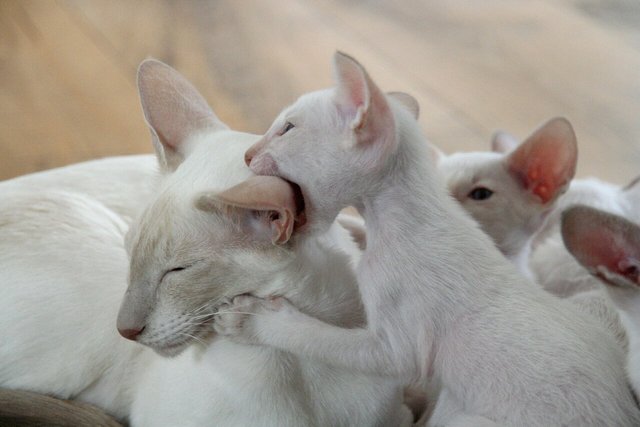
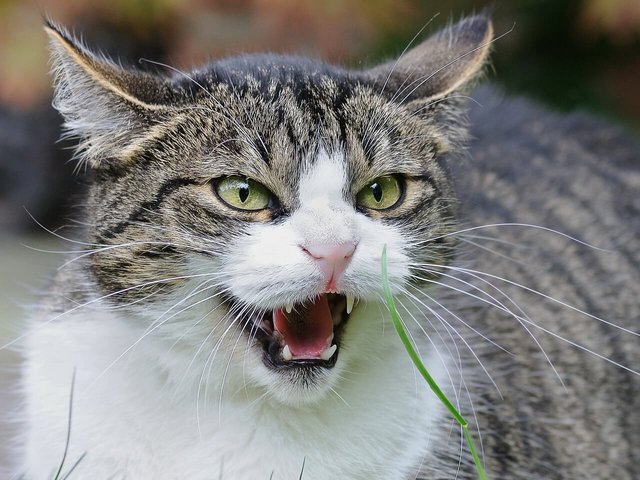
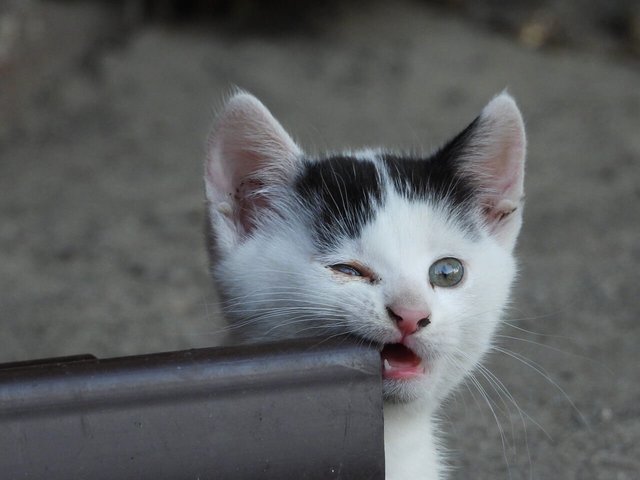
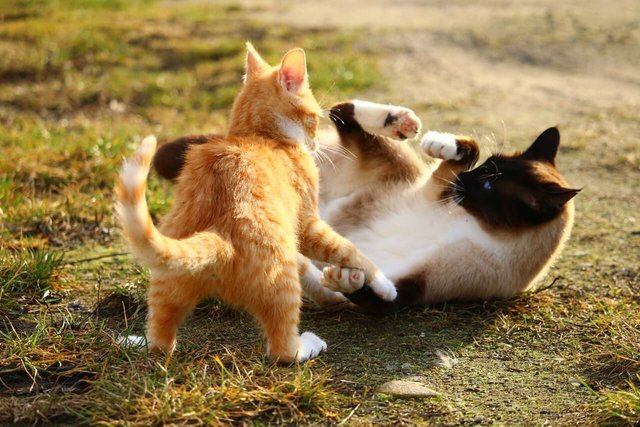
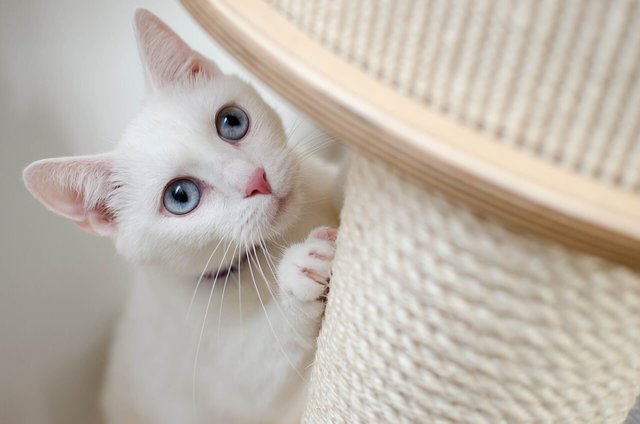
 Instagram
Instagram Pinterest
Pinterest Facebook
Facebook